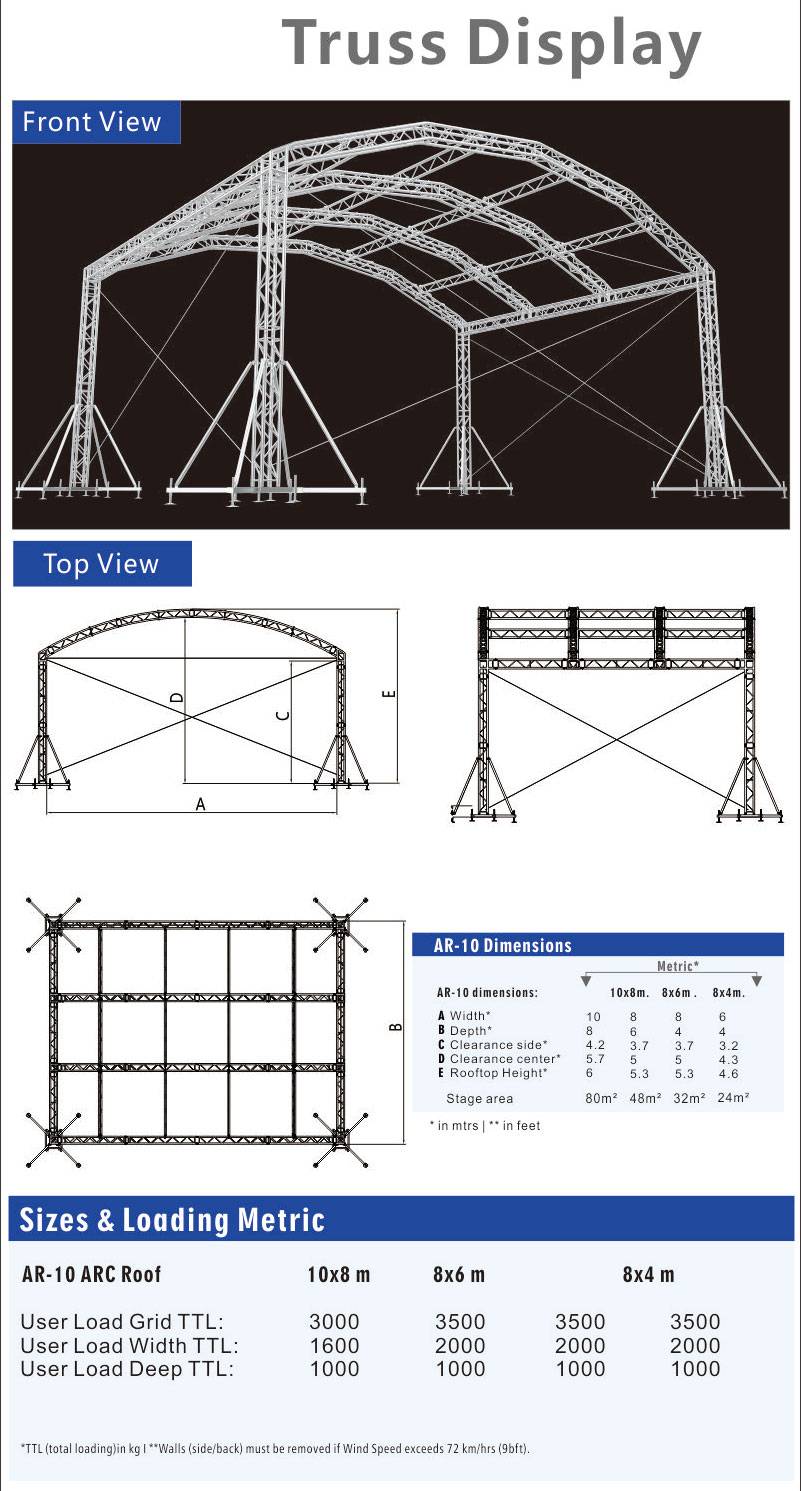What Are You Looking For?
the aluminum outdoor event concert roof structure's truss system for hanging speakers is a critical component ensuring successful and safe concert experiences. Its design requires meticulous engineering, considering various load scenarios, material properties, and safety regulations. Continuous advancements in materials, design methodologies, and technologies promise even more robust, efficient, and sustainable systems in the years to come, enhancing the quality and safety of outdoor concert events worldwide.
The primary function of an aluminum truss system in this context is to provide a stable and secure platform for suspending loudspeakers. These trusses, fabricated from high-strength aluminum alloys like 6061-T6, are arranged in a configuration dictated by the venue's dimensions, the speaker array's geometry, and the anticipated load. The design process involves intricate calculations considering various factors, including:
Load Calculations: Accurate estimation of the weight of the speakers, rigging hardware, and any additional equipment suspended from the trusses is paramount. This includes accounting for wind load, snow load (in applicable climates), and potential seismic activity. Overestimation is preferable to underestimation, ensuring a significant safety margin. Software programs employing finite element analysis (FEA) are crucial in this stage, simulating stress distributions under various load scenarios.
Truss Configuration: The selection of truss type (e.g., square, triangular, rectangular) and configuration (e.g., single, double, or multiple layers) depends on the span, load, and aesthetic requirements. Square trusses offer greater stability, while triangular trusses provide higher load-bearing capacity for their weight. Complex configurations may be necessary to accommodate curved or irregular roof designs.
Rigging Hardware: The connection points between the trusses and the speakers necessitate robust and reliable rigging hardware. This includes shackles, turnbuckles, safety clamps, and other specialized components, all rigorously tested and certified to meet industry safety standards. Careful attention must be given to the material compatibility and corrosion resistance of the hardware to ensure longevity and safety.
Wind Loading and Stability: Outdoor events are susceptible to varying wind conditions. The truss system must be designed to withstand significant wind loads without compromising stability. Aerodynamic considerations are vital, often necessitating specialized wind bracing and anchoring systems. Local building codes and wind-load regulations must be strictly adhered to.
Ground Support Structure: The truss system doesn't exist in isolation. A robust ground support structure, typically comprising steel towers or scaffolding, is essential for transferring the load from the trusses to the ground. This structure must be equally well-engineered and meticulously inspected to prevent collapse.

The material properties of the aluminum alloy used are fundamental to the system's performance. Aluminum's lightweight nature minimizes structural weight, reducing the load on the ground support structure and facilitating easier transportation and setup. Its high strength-to-weight ratio allows for longer spans and greater load-bearing capacity compared to other materials like steel, reducing the number of supporting elements and improving aesthetics. Furthermore, aluminum exhibits excellent corrosion resistance, ensuring the system's longevity even in harsh outdoor conditions. However, its susceptibility to fatigue under repeated cyclic loading must be addressed through proper design and maintenance.
Safety is paramount in the design and implementation of any concert roof structure. Regular inspections, employing qualified structural engineers and riggers, are crucial to identify potential weaknesses or damage. Compliance with relevant safety regulations and industry best practices is non-negotiable. The use of redundant safety mechanisms, such as multiple load-bearing points and safety lines, further mitigates risk. Thorough training of personnel involved in the setup, operation, and dismantling of the system is essential to prevent accidents.
Looking towards the future, advancements in materials science and engineering will likely lead to the development of even lighter, stronger, and more versatile aluminum alloys for truss systems. Furthermore, the integration of smart technologies, such as sensors to monitor stress levels and wind speeds, will enhance safety and operational efficiency. Modular designs, enabling easier assembly and disassembly, are also gaining traction, reducing setup time and cost. Sustainable practices, focusing on material recyclability and reduced environmental impact, will play an increasingly important role in the design and manufacturing of future aluminum truss systems.
